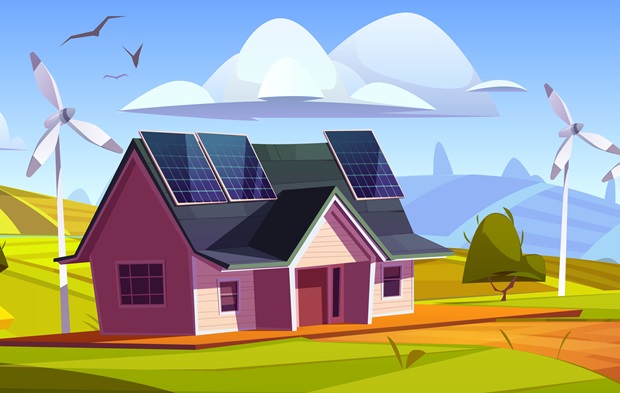The Philippines is moving successfully in achieving its goal to boost its share of renewable energy (RE) in its generation mix, but could be “more aggressive” in its targets. This was disclosed by a climate and clean energy expert.
Ramnath Iyer from the research team of Climate & Renewable Energy Finance for Asia at the Institute for Energy Economics and Financial Analysis (IEEFA), said, “ It must be pointed out that the Philippines is abundant in resources and would do well to drive policies that further encourage investors, particularly from the “vibrant” private sector, said Iyer said the Philippine government has taken significant steps to drive its goal to reach 35% renewable energy share by 2030 and 50% by 2040 with policies that include active participation in the Green Energy Auction Programme (GEAP).”
“The Philippines is on track, for now“] and the Philippines is doing pretty well because the policies are being implemented,” he said.
“There are no restrictions on foreign ownership, which means that the sector is open for investment. These kinds of policies, the fact that investors can own the companies, are very positive for investments,” he added.
Further, as per the Bloomberg New Energy Finance (BNEF) Climatescope 2023 report, the Philippines was ranked fourth amongst the most attractive emerging markets for renewable energy due to its auctions, feed-in tariffs, net-metering schemes and tax incentives.
The report further stated that the Philippines has awarded 3.4 gigawatts (GW) of renewable energy capacity out of the 11.6 GW offered in its second green energy auction, of which 1.2 GW are scheduled for 2024 to 2045 for ground-mounted and rooftop solar as well as onshore wind power.
Further, 2.2 GW are expected by 2026. The country’s installed renewables capacity currently accounts for 18% of the total.
Iyer said, “Whilst the Philippines is on track for its targets, the country would still have to accelerate the pace of RE adoption and ensure better performance annually. Considering that the country has abundant resources in offshore wind, solar, geothermal, and hydro, its targets do not seem to be the “most aggressive.”
“Given the entire range and the diversity of renewable resources available for the Philippines, it really can be pushing the envelope further and going for a more aggressive phase-out of fossil fuels and thereby improving their energy security, because a lot of these fossil fuels are imported,” he said.
“So in some ways, the programme is not ambitious enough, and could be more ambitious,” he added.
As per data, the Philippines’ Department of Energy, the share of renewable energy generation currently stands at 22%,
It is reported that the nation has seen the increase in renewable portfolio standard to 2.52% in 2023 across distribution utilities, retail electricity suppliers, and generation companies, as well as the foreign ownership allowed for renewable energy projects.
Unlike its neighbouring countries such as Malaysia, Indonesia, Vietnam, and Thailand where state-owned companies dominate the market, the private sector plays a bigger role in the Philippines.
As per Iyer, this is a positive development as the government could not shoulder the projects for the energy transition due to the scale of investments needed.
“Given this constraint, it’s positive that the Philippines has a vibrant private sector. It also has a very vibrant and well-capitalised banking sector, which can help in financing and knows these private sector players pretty well. And they have had good banking relationships,” Iyer said.
“The private sector has a very key role to play in the energy transition. It’s already playing it, [and] I think the private sector is doing a good job of playing it,” he added.
It may be noted that in a significant move the nation exited from its largest coal-fired plant with a total capacity of 246 megawatts (MW) run by South Luzon Thermal Energy Corporation through a privately financed transition mechanism.
Solar Power, which started in 2013, operates 183 MW of solar generating capacity and won large bids on the first round of the auction programme.
“A lot of these companies are relatively young. It also shows there is a thriving private sector in the Philippines, which can take advantage of these if the government sets the right incentives and makes the playing field level for all the players,” Iyer said.
However, citing few challenges, the report says that the cost of financing for RE projects remains a challenge for developers as this is affected by the increase in interest rates globally.

